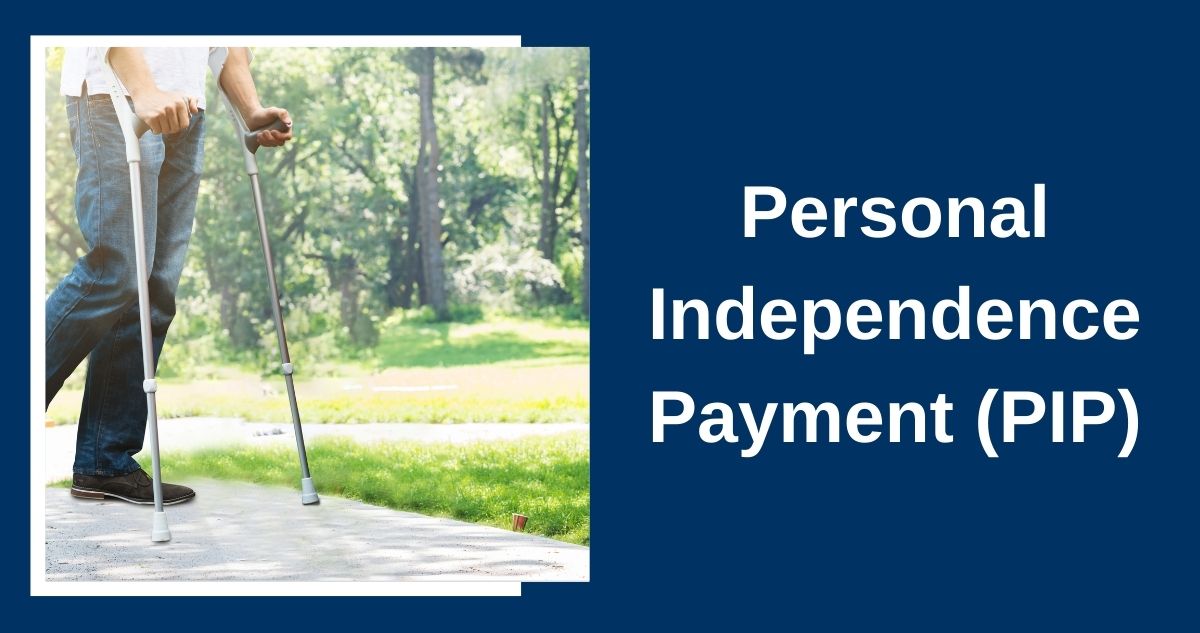Navigating the world of personal independence payments can feel overwhelming, especially with ever-changing regulations and updates. Understanding recent developments is crucial for those relying on these vital funds. This blog dives into the latest Personal Independence Payment news, covering everything from registration trends to clearance outcomes. Whether you’re a claimant or just curious about how the system works, our comprehensive insights will equip you with valuable knowledge to help you make informed decisions about your situation. Join us as we explore what’s new in PIP and discover essential statistics that highlight crucial changes within the system!
Critical Updates on Personal Independence Payment News
Recent developments in Personal Independence Payment news have caught the attention of many. The government continues to streamline processes, aiming to improve claimant experiences and reduce waiting times.
One significant update is the introduction of digital tools for easier application submissions. This shift enhances accessibility and efficiency, making it more straightforward for individuals to apply from their homes.
Moreover, there has been an emphasis on reviewing existing claims more thoroughly. The goal is to ensure that all claimants receive appropriate support based on their current needs.
In addition, recent outreach initiatives aim to help those who may be unaware of their eligibility. By raising awareness in communities, authorities hope to increase registrations among underserved populations.
Upcoming changes in assessment criteria are also being discussed. These adjustments aim to reflect evolving societal norms and medical understanding related to disabilities and long-term health conditions.
Essential Insights You Need to Know

Personal Independence Payment (PIP) is a crucial benefit for individuals with disabilities or long-term health conditions. Understanding the latest news surrounding PIP can help beneficiaries navigate the complexities of claims and reviews.
One essential insight is that timely registration is vital. Delays in submitting applications can lead to missed financial support opportunities.
Additionally, it’s essential to stay informed about review processes. Regular assessments ensure that claimants receive appropriate awards based on their current circumstances.
Moreover, knowing your rights during mandatory reconsiderations can empower you throughout the process. Many people are unaware they have options if their initial application meets an unfavorable outcome.
Keep abreast of changes affecting eligibility criteria or award rates to maximize benefits effectively. Staying updated ensures you’re not left behind in this evolving landscape of personal independence payment news.
PIP Claim Activity: Registrations, Clearances, and Reviews
The landscape of Personal Independence Payments (PIP) is dynamic, with fluctuations in claim registrations and clearances. Each month brings new data reflecting the evolving needs of applicants.
Since PIP’s inception, thousands have registered for support. The trend illustrates a growing awareness among individuals about their entitlements. As more people navigate this complex system, understanding the process becomes essential.
Clearance rates also tell a compelling story. They reveal how quickly claims are assessed and either awarded or declined. Monitoring these rates helps identify potential bottlenecks in processing.
Regular reviews ensure that awards remain appropriate as circumstances change over time. This diligence aids in maintaining fairness within the system while providing necessary support to those who require it most.
Engaging with current statistics allows stakeholders to grasp better how effectively PIP meets public needs through its ongoing adaptations and refinements.
Comprehensive Overview of Registrations and Clearances (April 2013 to July 2024)

The landscape of Personal Independence Payment (PIP) registrations and clearances has evolved significantly since its inception in April 2013. Understanding these changes provides valuable context for claimants navigating the process.
From 2013 onwards, there has been a steady increase in registrations. This reflects growing awareness and access to PIP among eligible individuals. As more people seek support, the system faces pressure to keep pace with demand.
Clearance rates have also shifted over the years. Initial claims display varied outcomes, influenced by factors like assessment methods and policy updates. The transition from Disability Living Allowance (DLA) to PIP introduced complexities that impacted both registrants and assessors alike.
Data collected up until July 2024 illustrates trends worth noting. Not only do they reveal peaks during specific periods, but they also indicate how external factors shape claimant experiences within this vital framework of financial assistance.
Monthly Breakdown of Registrations and Clearances for Initial Claims ANd Planned Award Reviews and Changes in Circumstances (up to July 2024)
Tracking the monthly registrations and clearances for Personal Independence Payment (PIP) offers a window into how the system is functioning. From April 2013 to July 2024, fluctuations in these numbers reveal trends that can impact potential claimants.
Each month, new claims are registered alongside those undergoing reviews or changes due to evolving circumstances. This dynamic flow indicates ongoing engagement with the PIP process.
For instance, certain months show spikes in initial claims typically aligned with public awareness campaigns or policy updates. Conversely, review periods may lead to an influx of applications as individuals seek reassessment of their eligibility based on changing needs.
Understanding these patterns can guide applicants in timing their submissions effectively and anticipating possible waiting durations associated with each stage. Keeping an eye on this data helps stakeholders navigate the complexities of personal independence payment news more adeptly.
Clearance Outcomes: Awards Overview

Clearance outcomes for Personal Independence Payments (PIP) reveal significant insights into award distributions. Each case reflects the complexities of individual circumstances and needs.
Recent data showcases a varied landscape, with awards granted based on comprehensive assessments. These evaluations consider both physical and mental health conditions, ensuring that funds reach those most in need.
The award rates have fluctuated over different review periods, highlighting ongoing changes in eligibility criteria and assessment processes. Many applicants find themselves navigating this dynamic system as they seek support.
Understanding these clearance outcomes is crucial for potential claimants. It provides clarity on what to expect during their application journey and emphasizes the importance of accurate information submission to secure rightful assistance.
Award Rates and Assessment Award Rates (up to July 2024)
The landscape of Personal Independence Payment (PIP) award rates has seen notable fluctuations up to July 2024. Understanding these changes helps claimants navigate the system effectively.
Recent data shows that a significant percentage of initial claims result in awards. This statistic reflects both the growing awareness around PIP and improvements in application processes.
Assessment award rates are equally crucial, as they indicate how many individuals receive an enhancement following a reassessment or change in circumstances.
These insights serve as a beacon for those seeking support. With each update, potential claimants gain clarity on what to expect during their journey through the PIP assessment process.
Keeping abreast of these trends can empower applicants, helping them make informed decisions about their claims and future assessments within this vital social security framework.
Award Types and Review Periods Explained
When applying for Personal Independence Payment (PIP), understanding award types is crucial. There are two main categories: standard and enhanced rates. These determine the financial support available based on assessed needs.
Review periods vary based on individual circumstances. Typically, awards can last between one to ten years, with periodic reviews to assess ongoing eligibility and changes in condition.
Standard awards are often granted for shorter durations, requiring more frequent assessments. Enhanced awards may provide more extended stability but can also be subject to review if significant changes occur in a claimant’s situation.
Being aware of these distinctions helps applicants anticipate their future interactions with the PIP system. Regular updates ensure that recipients receive appropriate assistance tailored to their evolving health needs.
Total Cases Entitled to PIP: An Overview of the Caseload
As of July 2024, the landscape of Personal Independence Payment (PIP) continues to evolve. The total number of cases entitled to PIP reflects a significant societal need for support. This payment offers vital assistance to individuals facing various challenges due to disabilities or long-term health conditions.
The caseload has steadily increased since its introduction in 2013. Each year brings new applicants seeking financial help and relief from their struggles. The application process can be daunting, but it plays an essential role in ensuring that those who qualify receive the funds they need.
Understanding these numbers gives insight into the broader implications of disability support in society. It highlights not just individual stories but also systemic issues surrounding accessibility and welfare provisions available for vulnerable populations across the UK.
Recent Review Outcomes
Recent review outcomes for the Personal Independence Payment (PIP) have shown a notable shift in trends. Many claimants are experiencing varied results, with some receiving increased awards while others see no changes or reductions.
This dynamic landscape reflects ongoing assessments and policy adjustments within the system. Analysts suggest that factors such as health conditions and documentation quality play crucial roles in determining results.
Claimants who underwent reviews often report mixed feelings about their experiences. The process can induce anxiety, particularly when individuals feel uncertain about how their circumstances will be interpreted.
Understanding these outcomes is vital for current applicants navigating the PIP journey. Staying informed can aid in preparing better applications and anticipate potential challenges ahead. Engaging with community support groups may also provide valuable insights into personal experiences during reviews.
Review Outcomes Analysis (August 2019 – July 2024): A Five-Year Review
The period between August 2019 and July 2024 marks a significant phase for Personal Independence Payment (PIP) review outcomes. This five-year window reveals trends that are crucial for understanding how assessments have evolved.
During this time, the number of reviews conducted has steadily increased. Notably, many claimants experienced varying levels of success in their appeals. It showcases the complexities inherent in navigating the PIP system.
Moreover, some areas reported longer clearance times than others, revealing disparities across different regions. The reasons behind these inconsistencies often stem from local administrative practices or resource allocation.
Additionally, insights into claimant demographics reveal exciting patterns. Certain disabling conditions tended to receive more favorable outcomes compared to others during this timeframe.
This analysis sheds light on both strengths and weaknesses within the current framework of PIP reviews. Understanding these factors is essential for future improvements and ensuring fair treatment for all applicants.
Clearance Times and Outstanding Cases
Clearance times for Personal Independence Payment (PIP) applications have become a focal point for many claimants. As of July 2024, the median time taken to process claims has shown some fluctuations.
Outstanding cases pose a significant concern, with delays affecting individuals who rely on timely support. The backlog can result in increased anxiety and uncertainty among applicants.
Understanding these clearance times is crucial for both claimants and stakeholders involved in the PIP system. Regular updates from relevant authorities help shed light on ongoing improvements aimed at addressing these outstanding cases.
Many advocates emphasize the importance of transparency throughout the process. Clear timelines enable better planning and set realistic expectations for those awaiting decisions about their claims.
Clearance Times (Median Weeks) (up to July 2024)
Clearance times for Personal Independence Payment (PIP) applications play a crucial role in assessing the efficiency of the process. As of July 2024, median clearance times reflect how long applicants typically wait for their initial decisions.
The data reveals trends over recent years that can impact claimants’ experiences. For instance, any increases in these median weeks could indicate rising backlogs or changes to assessment methods.
Understanding these timelines helps applicants set realistic expectations about when they might receive updates on their claims. Awareness of potential delays is essential for planning finances and managing daily living expenses.
Moreover, local variations may also influence waiting periods. Claimants should stay informed about regional differences to navigate their circumstances better and seek assistance if needed.
Mandatory Reconsiderations (MRs) Insights
Mandatory Reconsiderations (MRs) are a vital part of the Personal Independence Payment process. They allow claimants to challenge decisions made regarding their PIP claims.
They understand how MRs work, which is crucial for anyone navigating this system. When a claimant is dissatisfied with an outcome, they can request an MR within one month of receiving the decision. This initiates a review by the Department for Work and Pensions (DWP).
The statistics surrounding MRs reveal exciting trends. Clearance outcomes show varying success rates depending on individual circumstances and documentation provided during the reconsideration process.
Timeframes also play a significant role in MRs. Median clearance times offer insights into how quickly these reviews are conducted, impacting claimants’ financial stability while awaiting resolution.
Being informed about Mandatory Reconsiderations empowers individuals to take proactive steps in their journey through personal independence payment news.
MR Clearance Outcomes (Excluding Withdrawn MRs) (up to July 2024)
Mandatory Reconsiderations (MRs) are a pivotal part of the Personal Independence Payment process. They give claimants a chance to challenge decisions made regarding their PIP claims.
Up to July 2024, MR clearance outcomes reveal exciting trends. An increasing number of MRs have been filed as awareness grows about this crucial step in the appeal process.
Data shows that many cases lead to successful overturns. Claimants often find additional support or evidence that helps strengthen their case during this stage.
The time taken for clearances has also remained a focus. Understanding how long it takes can help individuals manage expectations effectively when navigating through the system.
As more people engage with MRs, it’s essential to keep an eye on these statistics and what they mean for future claim processes. These insights can empower claimants and enhance their understanding of their rights within the PIP framework.
MR Clearance Times (Median Calendar Days) (up to July 2024)
Mandatory Reconsiderations (MRs) serve as a crucial step in the Personal Independence Payment process. For many claimants, understanding clearance times can shed light on what to expect after submitting an MR request.
As of July 2024, median clearance times for MRs have shown variability depending on several factors. The complexity of individual cases often plays a significant role in determining how quickly decisions are made.
In recent months, statistics indicate that most MRs are cleared within a specific range of days. This timeframe helps set expectations for those navigating this challenging landscape.
It’s important to note that even with established median times, some individuals may experience longer waits due to backlogs or additional information required from them. Keeping informed about these timelines can empower claimants during their journey through the PIP system.
Customer Journey Statistics for Personal Independence Payment News
Understanding the customer journey for Personal Independence Payment (PIP) is crucial. It sheds light on how beneficiaries navigate the process from application to outcome.
Statistics show that applicants often feel overwhelmed at various stages. The initial decision phase can be particularly challenging, with many waiting weeks for responses. This delay affects their overall experience and well-being.
Tracking mandatory reconsiderations reveals a complex landscape. Many individuals pursue this step due to dissatisfaction with initial outcomes. The statistics indicate varying levels of success in these appeals, highlighting the need for better support resources.
Moreover, changes in circumstances bring additional challenges. Applicants must manage documentation and ensure timely submissions while dealing with their health conditions simultaneously.
These insights reveal patterns that can inform improvements within the PIP system, ultimately aiming to enhance user experiences across all touchpoints.
Tracking Initial Decisions Through to MR and Appeals
Tracking the journey from initial decisions to Mandatory Reconsiderations (MR) and appeals reveals significant nuances in the PIP process. Each step involves careful consideration of individual circumstances.
After receiving an initial decision on a claim, many individuals find they need to challenge this outcome through MR. This can be daunting, as understanding the reasons behind a decision is crucial for effective advocacy.
The timeline following an MR request can vary widely. Some cases resolve quickly, while others may take longer due to complex evaluations or additional evidence gathering.
Appeals add another layer of complexity. Individuals often feel overwhelmed navigating these stages without proper guidance. Support networks play a vital role here, offering assistance throughout this challenging path.
Staying informed about changes in policy and procedure is essential for anyone engaged in this process. Knowledge empowers individuals to make their voices heard effectively.
Outcomes of Planned Award Reviews and Changes of Circumstances: Journey Through MR and Appeals
Navigating the outcomes of planned award reviews and changes in circumstances can be complex. Each case is unique, reflecting individual needs and life situations.
When a review is initiated, claimants often find themselves on an unpredictable journey. Initial decisions can lead to mandatory reconsiderations (MR) if recipients disagree with the assessment.
The MR process allows individuals to present new evidence or clarify their situation. This step can significantly influence the final decision. Understanding how this works is crucial for anyone facing a review.
Following an MR, appeals may be necessary if the outcome remains unsatisfactory. The timeline for these processes varies greatly, adding another layer of uncertainty for applicants.
Throughout each stage—whether it’s a planned review or responding to changes—the focus should remain on clear communication and thorough documentation to support claims effectively. This proactive approach helps ensure that all relevant information reaches decision-makers promptly.
PIP Statistics in Scotland
Scotland’s landscape of Personal Independence Payment (PIP) statistics reveals significant insights into how the benefit impacts residents. As of July 2024, a considerable number of claims have been registered, showcasing the demand for financial support among those with disabilities.
The award rates reflect both success and challenges faced by applicants. Many individuals have found the assistance pivotal in managing everyday life costs. However, some still encounter hurdles during their claim journey.
Clearance times vary across different regions in Scotland. This inconsistency may lead to frustration among claimants who are eager for timely decisions on their applications.
Further examination of PIP cases indicates notable trends based on disabling conditions prevalent within Scottish communities. Understanding these patterns can help shape policies that better serve the unique needs of this population.
With continuous updates emerging from government reports, staying informed is vital for all interested parties navigating this essential support system.
Overview of PIP Cases with Entitlement in Scotland (up to July 2024)
Scotland has seen significant developments in Personal Independence Payment (PIP) cases. As of July 2024, the number of individuals entitled to PIP continues to grow. This reflects a broader recognition of the diverse needs within communities.
The demographic breakdown reveals varying levels of entitlement across disabling conditions. Mental health issues and mobility impairments tend to dominate the statistics, highlighting critical areas for support.
Accessing PIP remains essential for many Scots who rely on this financial aid. The process can be complex, yet it is designed to cater specifically to individual circumstances.
Recent data indicates that claimants are becoming more aware of their rights and entitlements. Increased awareness leads to improved applications and outcomes, demonstrating progress in public understanding of available support systems.
Ongoing efforts aim to streamline processes further, ensuring that those who need assistance receive it promptly and efficiently.
Clearance Times and Customer Journey Statistics in Scotland
Clearance times for Personal Independence Payment (PIP) claims in Scotland reflect the ongoing efforts to streamline processes. Recent data indicates that applicants are experiencing varied timelines influenced by case complexity and submission volume.
The customer journey is particularly notable. Many individuals report navigating through initial claims with differing levels of clarity and support. Accessibility remains a crucial concern, prompting some organizations to provide additional resources.
Statistics reveal that while most applications are processed efficiently, there can be significant delays for specific categories like complex cases or those requiring further evidence gathering.
Understanding these dynamics helps applicants anticipate their experiences better. It also highlights areas where improvements could enhance service delivery in Scotland’s PIP framework. The goal remains clear: ensuring timely support for those who genuinely need it.
PIP Statistics by Disabling Condition: An Annual Comparison
Analyzing PIP statistics by turning off conditions offers vital insights into the landscape of support for individuals. Each year, data reveals trends in how various conditions impact eligibility and outcomes.
For instance, mobility impairments often show higher claim rates compared to mental health issues. This disparity can be attributed to differing visibility and societal perceptions surrounding disabilities.
Interestingly, neurological conditions like multiple sclerosis have consistently high award rates. These figures highlight not only the challenges faced but also the recognition of specific needs within assessments.
Over time, annual comparisons showcase shifts in public awareness and policy adjustments. Such changes reflect an evolving understanding of what constitutes disability in contemporary society.
Monitoring these statistics helps stakeholders identify gaps in service provision. Moreover, it informs future strategies aimed at improving accessibility and support mechanisms for all claimants.
Insights on DLA Reassessments: Annual Statistics Overview
The Disability Living Allowance (DLA) reassessment process has evolved significantly over the past few years. Annual statistics reveal trends that are critical for understanding how these changes affect claimants.
In 2023, there was a noticeable increase in reassessments compared to previous years. This uptick suggests that more individuals are seeking to review their eligibility amid changing circumstances or health conditions.
Critical data indicates that many applicants have successfully transitioned from DLA to Personal Independence Payment (PIP), showcasing the importance of staying informed about available support options.
Interestingly, the outcomes of these assessments vary widely across different regions and demographic groups. Some areas show higher approval rates than others, highlighting potential disparities in decision-making processes.
These statistics not only inform current claimants but also emphasize the need for ongoing advocacy and awareness regarding disability benefits in the UK.
About These Personal Independence Payment Statistics
The statistics surrounding Personal Independence Payment (PIP) offer a window into the realities faced by those with disabilities. These figures are essential for understanding trends in registrations, awards, and reviews.
This data is compiled from various sources, ensuring it reflects both current practices and historical changes. Each number tells a story of individual experiences navigating the system.
It’s essential to recognize that these stats can fluctuate based on policy changes or societal factors. The impact of economic conditions also plays a significant role in how many people apply or qualify for support.
Transparency is vital when discussing PIP statistics. They provide invaluable insights to advocates, policymakers, and claimants alike. By analyzing this information thoughtfully, we can better understand the effectiveness of support systems in place for individuals needing assistance.
Data Quality Statement and Breakdown Availability
When examining personal independence payment news, the quality of data is crucial. A robust Data Quality Statement ensures that statistics are accurate and reliable for decision-making.
This statement provides transparency regarding how data is collected, processed, and validated. Users can trust the figures presented, knowing they adhere to strict standards.
Additionally, breakdown availability offers stakeholders insights into various demographics. This includes age groups, disability types, and geographical locations—allowing for a comprehensive understanding of trends.
Such granularity helps identify areas needing attention or improvement within the PIP system. It also aids researchers and policymakers in tailoring support services effectively.
By prioritizing data integrity and accessibility, authorities foster confidence among claimants and advocates alike. The continuous evolution of these practices reflects a commitment to improving outcomes for all involved in the personal independence payment process.
Understanding the Rounding Policy and Retrospection
The rounding policy is a crucial aspect of Personal Independence Payment (PIP) statistics. It ensures data consistency and clarity, especially when dealing with numbers that can fluctuate significantly.
This policy allows for the simplification of figures to make them easier to understand. For instance, instead of reporting exact percentages or totals that may appear unwieldy, rounded figures provide a more transparent snapshot.
Retrospection plays an essential role, too. When evaluating past cases or changes in policies, retrospective assessments help shape future decisions. This means understanding how previous claims were handled can influence current practices and guidelines.
Both elements work together to maintain transparency within PIP operations. By ensuring accuracy while simplifying data presentation, they help recipients and stakeholders grasp the evolving landscape of personal independence support effectively.
Overview of PIP Operational Rollout
The operational rollout of Personal Independence Payment (PIP) has been a significant undertaking since its introduction in April 2013. From the outset, it was designed to replace Disability Living Allowance for working-age individuals.
As part of this transition, numerous processes were established to ensure smooth implementation across various regions. Staff training and public awareness campaigns played vital roles in educating both applicants and assessors about the new system.
Technology also became crucial during the rollout. Online platforms simplified claims submissions, while data analytics helped track progress and outcomes efficiently.
Challenges arose as expected; however, ongoing feedback from users highlighted areas for improvement. The Department for Work and Pensions continually adapted strategies based on real-world experiences to enhance service delivery.
Today, PIP stands as a vital support mechanism for many with disabilities or long-term health conditions, illustrating evolving practices within the welfare system.
Summary of the Customer Journey for Personal Independence Payment News
Navigating the Personal Independence Payment (PIP) process can be complex. Understanding each step is crucial for claimants.
From initial registration, individuals typically encounter a detailed assessment phase. This stage involves gathering medical evidence and completing forms accurately.
Once submitted, claims undergo review and clearance processes. Timeliness varies significantly depending on individual circumstances and workload within processing centers.
For those facing challenges, mandatory reconsiderations provide another layer of scrutiny. Claimants should prepare for potential appeals if outcomes are not favorable.
While many succeed in obtaining support quickly, others may experience delays or complications. Staying informed about changes in PIP news helps navigate these hurdles effectively.
The journey doesn’t end with an award letter; regular reviews are part of maintaining entitlement. Keeping accurate records ensures preparedness for future assessments, too.
Additional Resources: Where to Find Out More
If you’re looking to dive deeper into Personal Independence Payment news, several resources can provide valuable insights. The official UK government website is a primary source for up-to-date information and guidelines on PIP claims.
Charities like Citizens Advice offer tailored advice and support, helping you navigate the complexities of the system. Their resources often include guides that detail each step of your application process.
Online forums also serve as excellent platforms for exchanging experiences with others in similar situations. These communities can be incredibly supportive and informative.
Social media channels are another excellent avenue for staying updated on changes related to PIP. Follow relevant organizations or advocacy groups for real-time updates and discussions surrounding personal independence payment issues.
Podcasts focused on disability rights may provide unique perspectives, too, enriching your understanding by sharing firsthand stories from individuals experiencing PIP journeys.
FAQs personal independence payment news
Navigating the world of Personal Independence Payment (PIP) can be challenging, and having your questions answered is essential for understanding how this system works. Here are some frequently asked questions regarding personal independence payment news that may help clarify your queries.
What is the purpose of PIP?
Personal Independence Payment is designed to assist individuals with disabilities or long-term health conditions, helping them manage their daily living costs.
How do I apply for PIP?
To apply for PIP, you’ll need to complete a claim form provided by the Department for Work and Pensions (DWP). This process begins with an initial phone call followed by paperwork detailing your needs.
What happens after my application is submitted?
Once you’ve submitted your application, it will go through a review process where assessors evaluate your eligibility based on medical evidence and any supporting documents you’ve provided.
Can I receive payment back if my claim is successful?
Yes. If you are awarded PIP, you may receive back payments dating from when you first became eligible up until your decision date.
How often will I need to have my award reviewed?
Review periods vary depending on individual circumstances but typically range from every few years to ongoing assessments if significant changes occur in health status or support needs arise.
Where can I find more information about PIP updates?
The official UK government website offers comprehensive guidance on all aspects of PIP. Additionally, numerous advocacy groups provide resources tailored toward different specific needs and concerns related to disability support schemes.
Understanding these common concerns helps demystify the complexities surrounding personal independence payment news. Keeping informed empowers applicants as they navigate their journey through registration, assessment reviews, and beyond.









127.0.0.1:49342: A Detailed Explanation of Ports, Localhost, And Basic Networking Concepts - msnmag.co.uk
[…] Also Read: Personal Independence Payment News […]